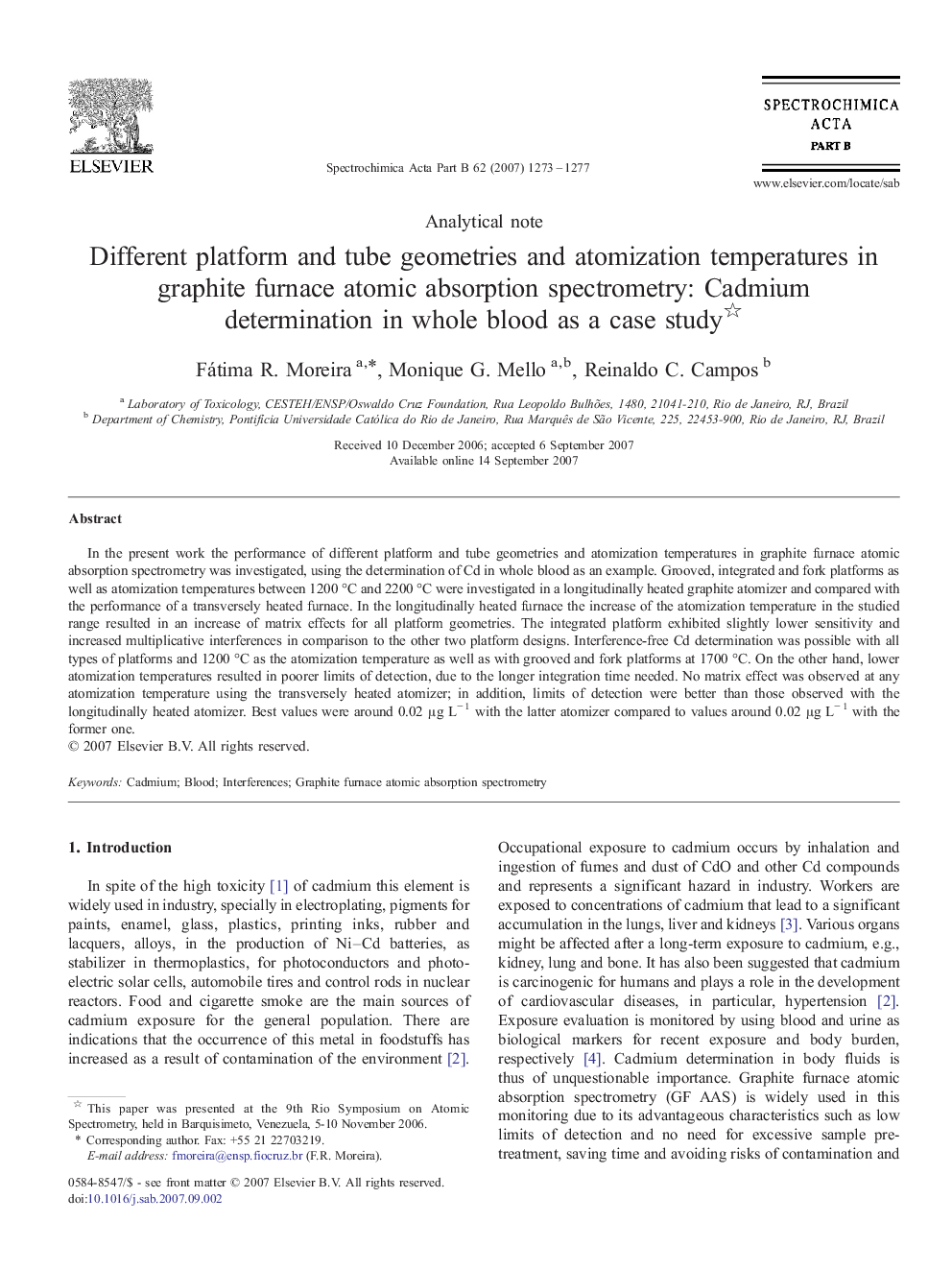| Article ID | Journal | Published Year | Pages | File Type |
|---|---|---|---|---|
| 1240599 | Spectrochimica Acta Part B: Atomic Spectroscopy | 2007 | 5 Pages |
Abstract
In the present work the performance of different platform and tube geometries and atomization temperatures in graphite furnace atomic absorption spectrometry was investigated, using the determination of Cd in whole blood as an example. Grooved, integrated and fork platforms as well as atomization temperatures between 1200 °C and 2200 °C were investigated in a longitudinally heated graphite atomizer and compared with the performance of a transversely heated furnace. In the longitudinally heated furnace the increase of the atomization temperature in the studied range resulted in an increase of matrix effects for all platform geometries. The integrated platform exhibited slightly lower sensitivity and increased multiplicative interferences in comparison to the other two platform designs. Interference-free Cd determination was possible with all types of platforms and 1200 °C as the atomization temperature as well as with grooved and fork platforms at 1700 °C. On the other hand, lower atomization temperatures resulted in poorer limits of detection, due to the longer integration time needed. No matrix effect was observed at any atomization temperature using the transversely heated atomizer; in addition, limits of detection were better than those observed with the longitudinally heated atomizer. Best values were around 0.02 μg Lâ 1 with the latter atomizer compared to values around 0.02 μg Lâ 1 with the former one.
Related Topics
Physical Sciences and Engineering
Chemistry
Analytical Chemistry
Authors
Fátima R. Moreira, Monique G. Mello, Reinaldo C. Campos,
